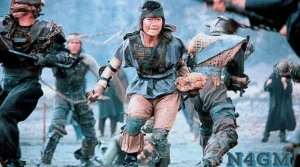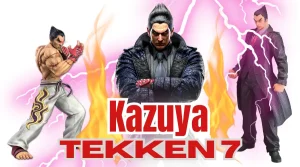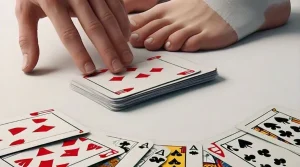Football is the world’s most popular sport now. But did you realize that its origins date back to ancient China? This ancient Chinese football, Cuju (pronounced “tsu-joo”) is the oldest form of football.
Let’s look at the origins, rules, and gameplay of Cuju. This post will show you how an ancient sport has influenced modern football.
Cuju: Ancient Chinese Football
It is an ancient Chinese sport that is closely related to modern football. The term “Cuju” comes from two Chinese characters: “Cu,” which means “to kick,” and “Ju,” which means “ball made of leather.”
It literally translates as “kickball.” It is the earliest known kicking game, with records dating back over 2,300 years.
Origins
- Origins: The origins of this can be found in China during the Warring States era (476-221 BC). It started off as a military drill meant to help soldiers get fitter and more trained.
- Early Mentions: The earliest mention of the sport is in the Zhan Guo Ce. It describes a game played in the state of Qi.
- Popularity and Spread: The sport gained popularity among the military. It later spread to the royal courts during the Han dynasty (206 BC-AD 220). It became a favored pastime for emperors and nobles alike.
- Developments During the Han Dynasty: During the Han Dynasty, it underwent significant developments. The game was standardized, and specific rules were established. It was played in specially built courts called ju chang. They had crescent-shaped goalposts.
- Evolution in the Tang Dynasty: The sport evolved during the Tang Dynasty (618-907). The ball’s design improved, and gameplay became more structured.
Rules And Gameplay
This ancient Chinese game, a precursor to football, had two styles: Zhuqiu and Baida. Each version had its own unique rules and gameplay.
1. Zhuqiu
Zhuqiu is one of two main styles of an ancient Chinese ball game. It is a precursor to modern football (soccer). This competitive version of this game was played at court feasts and special events. It emphasized teamwork and skill in kicking the ball through a goal.
Gameplay:
Two teams of 12 to 16 players each compete in Zhuqiu. Kicking the ball through the central goal, which is made up of two posts with a net stretched between them, is the object of the game. Players try to kick the ball through a hole that has been cut in the middle of the net.
Basic Rules:
- Teams: Two teams, each with 12–16 players.
- Objective: To score points, kick the ball through the middle hole in the goal.
- Scoring: Each time the ball travels through the goal, one point is scored. The team that scores the most points at the end of the match wins.
- Gameplay Structure: Before the game, the team leaders (qiutou) will draw lots to determine which team will start. They’ll also decide on the number of rounds. During each round, players pass the ball around, hoping to set up a shot at the goal.
- Fouls: Players are not permitted to use their hands. If the ball hits the ground, the round is over, and the side that last touched it loses possession.
Equipment:
The ball used in Zhuqiu was made of leather and stuffed with feathers. Over time, the design evolved. By the Tang Dynasty (618–907 AD), the ball was stitched in leather. It often had an air-filled bladder inside. This made the ball lighter and easier to control.
The goalposts were two vertical posts with a net between them. A hole was cut in the middle of the net. The goal’s height and width could vary. But, the central hole was a constant feature throughout the game’s history.
2. Baida
Baida is one of the two primary styles of this game. Unlike Zhuqiu, which is a team game with a goal, Baida is about individual skill and technique. This makes it a unique and engaging form of the game.
Gameplay:
Baida is typically played with a smaller number of participants, ranging from 2 to 10 players. The game is played within a defined area, often enclosed by thread or low walls. The goal is not to score but to show skill in kicking and controlling the ball.
Basic Rules:
- Players: The number of players can range from 2 to 10.
- Objective: Kick the ball and perform tricks, using no hands. Players take turns attempting to control and pass the ball.
- Scoring: Points are awarded based on the quality of play. Players can earn points for successful passes, great kicks, and skillful ball handling. Conversely, points are deducted for mistakes, such as:
- Failing to pass the ball far enough to reach teammates.
- Kicking the ball too far out of bounds.
- Kicking the ball too low or at the wrong moment.
- Fouls: Players are not allowed to use their hands. If a player commits a foul, points may be deducted from their score.
Equipment:
In Baida, the ball is like that in Zhuqiu. It is traditionally made of leather and stuffed with feathers. The playing area is usually marked by thread or low walls. This creates a boundary within which players can move and kick the ball.
How did Baida differ from modern sports like soccer or football?
- Focus on Individual Skill: While soccer and football stress teamwork and scoring, Baida did not. It focused on individual skill and technique. Players took turns trying to control and pass the ball. They earned points for the quality of their plays, not for scoring goals.
- Lack of Defined Goals: In Baida, there were no defined goals that players tried to kick the ball through. Instead, the field was enclosed with thread or low walls. Players aimed to show their skills in this area.
- Scoring System: Points in Baida were awarded based on skill, style, and ball handling. Players could earn points for successful passes and impressive kicks. However, points were also deducted for mistakes. These included failing to pass far enough, kicking the ball out of bounds, or kicking it too low.
- Number of Players: Baida had 2 to 10 players. So, it had fewer players than soccer and football, which have 11 per side.
- Allowed Body Parts: In Baida, players could use any part of their body, except their hands, to control the ball. This differs from soccer, where players can only use their feet. In American football, players can use their hands to carry and pass the ball.
The Legacy And Revival
1. The Decline
It was popular for centuries. But it declined during the Ming Dynasty (1368–1644). The game gradually faded away and was replaced by other forms of entertainment. However, the legacy of this sport lives on as the ancestor of modern football.
2. The Revival
In recent years, there has been a renewed interest in this ancient sport. The Chinese government and cultural groups aim to revive the game. It is a part of China’s rich cultural heritage. Now, museums and cultural festivals in China hold Cuju exhibitions and demos.
3. The Influence On Modern Football
Its influence on modern football is significant. Many historians debate its exact lineage. They believe that the game traveled through trade routes to Europe. It influenced the development of football in medieval times. Its focus is on skill, teamwork, and kicking a ball into a goal-created soccer.
The Future
It may regain popularity if people become more interested in traditional sports and culture. Museums, schools, and cultural organizations are spearheading efforts to protect and promote the game. It may never achieve the global popularity of modern football, but its place in history is guaranteed.
Conclusion
Cuju is more than just an ancient game; it is a testament to China’s rich cultural history. Its evolution from a military exercise to a popular sport reflects the changing dynamics of society over the centuries. As interest in traditional sports grows, it is gaining attention. It is a unique and important part of China’s sporting legacy.







